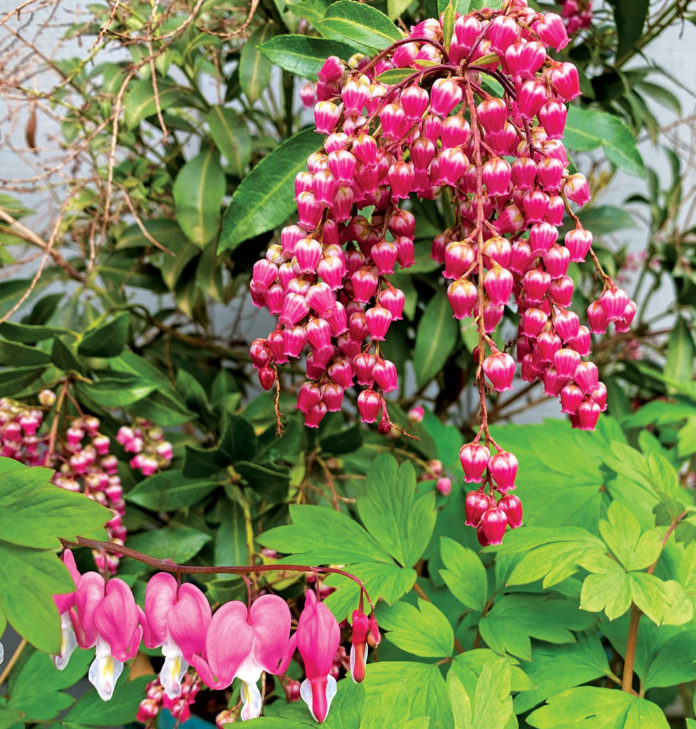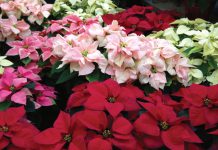
I’m so proud of myself. I write about all the important things to do in the early spring garden but often I don’t get to them myself. Seems there’s that book I’m reading or birding, hiking or wildflower walks that take priority. But this year, I’m on it. I’ve put out Sluggo on the new hosta emerging so the slugs and snails don’t have a field day this year and spread organic fertilizer on all my plants before it rained. I also weeded a little here and there. It’s amazing what you can accomplish in just two hours.
Think of gardening as therapy. Every moment you put in your garden is paid back with fresh vegetables or fragrant flowers. Think about it- stir up the soil, plant some seeds and you have flowers and vegetables in a few months. The satisfaction you get from cultivating living things is priceless. Get started on this free therapy by tending to your garden this week.
Check drip systems for leaks or emitters clogged by dirt or earwigs. Flush sediment from filters and check screens for algae. You may need to add emitters if plants have grown significantly and move the emitters farther away from the crown of the plant and out closer to the feeder roots which are under the drip line.
Spread fresh compost or wood mulch around all your plants. Good soil is the secret to successful gardening. The first principle of organic gardening is to feed the soil and it will feed the plant. Remember that all gardening used to be organic. Layer 2-3 inches of compost or mulch on top of the soil and let it slowly decompose and filter down into the earth. Bark nuggets do not increase your soil’s fertility like compost or wood chips do but they do conserve moisture and help keep weeds at bay.
Transplant any plants in the garden that have outgrown their space or are not with other plants requiring the same water usage. Now is a good time because plants are full of growth hormones and recover quickly from transplant shock. As you plant new additions to the garden add organic matter to the soil if it’s sandy. Organic matter enriches and allows it to hold water more efficiently. If your soil is sandy, organic matter will allow your soil to hold more moisture longer. If your soil tends toward clay, organic matter will loosen it and improve drainage. In fertile soil, plants grow deep roots, are hardier for cold, more resistant to disease and more drought tolerant. Organic matter such as compost, planting mix and well-rotted manure boosts nutrition and improves soil structure.
Fertilize—Citrus may be looking yellow from lack of nitrogen and iron which is not absorbed easily during the cold season. Shrubs and fruit trees just emerging from dormancy are begging for their first meal of the season. Lawns—if you still have a small section—and ground covers begin their spring growth now also and benefit from a boost of organic nitrogen. Spread a thin layer of compost over everything. Leave grass clippings on the lawn to shade the roots as it get warmer and as they break down they help feed it, too. Perennials benefit from both a fresh layer of compost or composted manure and a light application of balanced fertilizer. They respond to the phosphorus from bone meal especially in the spring for root growth, stem sturdiness and flower development. Wait until azaleas, camellias and rhododendron have finished blooming and you see new leaf growth starting before feeding them.
Weed—Pull weeds regularly before they set seed. They pull out easily from moist soil. Weeds rob your plants of precious water. Think of weeding as free gym time. If you are plagued by spiny-ball hedge parsley weeds it’s worth your time to pull them now before they go to seed.
Check for aphids. They are out in full force sucking plant juices from the tender new leaves of everything from roses to hellebore to Japanese maples. A strong spray from the hose may be enough to dislodge them. If they still persist, you can spray organic insecticidal soap, neem oil or horticultural oil to kill them. As with all pesticide sprays, do this early in the morning or later when they are not in the sun. Be sure to test first to make sure the spray doesn’t burn the new growth and always mix according to the directions.
Ants can also bring aphids up into trees and shrubs such as camellias, citrus and roses. Ants feed off honeydew secreted by aphids, scale and other plant-juice sucking insects. Ants also protect these pests from natural predators. To keep them off, wrap trunks with a 1-2″ wide strip of masking tape and coat with a sticky barrier like Tanglefoot. Keep the barriers free of dirt and check them periodically for breaks. Reapply when necessary.
Plant cool season vegetables like peas, chard, spinach, broccoli, cauliflower, cabbage, lettuce, onions and other greens. You can also sow seeds of beets and carrots. The soil is still too cold for tomatoes and other warm season vegetables.
The most important to-do is to take time out and enjoy your garden and our beautiful surroundings. Those last few weeds will be there tomorrow but you’ll never get another today.
Jan Nelson, a landscape designer and California-certified nursery professional, will answer questions about gardening in the Santa Cruz Mountains. Email her at ja******@*ol.com, or visit jannelsonlandscapedesign.com.











